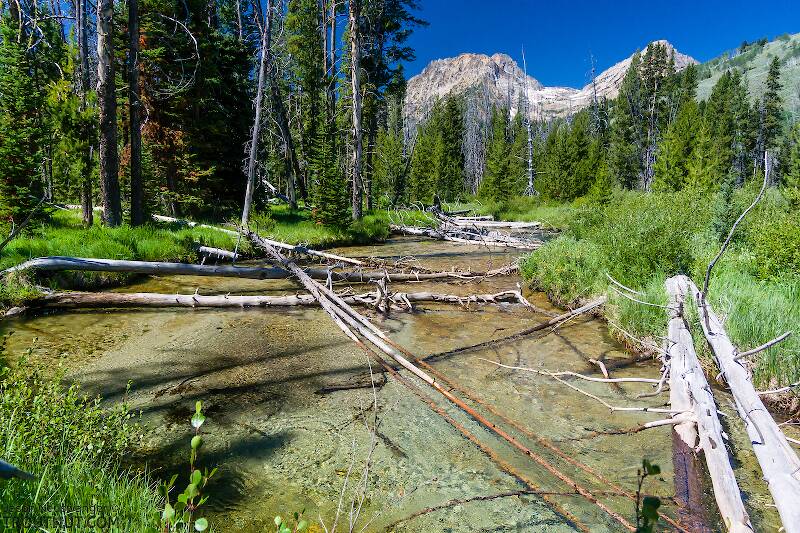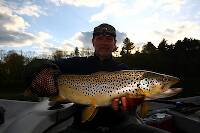
Hex Mayflies
Hexagenia limbata
The famous nocturnal Hex hatch of the Midwest (and a few other lucky locations) stirs to the surface mythically large brown trout that only touch streamers for the rest of the year.
Featured on the forum

Troutnut is a project started in 2003 by salmonid ecologist Jason "Troutnut" Neuswanger to help anglers and
fly tyers unabashedly embrace the entomological side of the sport. Learn more about Troutnut or
support the project for an enhanced experience here.
GONZO on May 17, 2009May 17th, 2009, 8:43 am EDT
Matt,
Others can advise you about access and conditions much better than I can. I understand that the Little J does have March Browns. They should be emerging now. As is the case on many Eastern waters, that hatch is often sparse rather than concentrated and often extends into early June. The "sulphur" that should also be emerging is invaria. On most PA trout streams that have them, the dorothea hatch typically begins later (toward the end of the month). Although I'm not at all sure that "true" dorothea occur on the J, perhaps there are some. Many of the smaller, later sulphurs that are often attributed to dorothea are continuations of the invaria hatch. In areas with extended hatches of invaria, they become smaller and somewhat lighter in color as the hatch continues. However, that taxonomic distinction makes only very slight differences from a fishing standpoint, and probably is only of interest to nitpickers (like me). :)
Others can advise you about access and conditions much better than I can. I understand that the Little J does have March Browns. They should be emerging now. As is the case on many Eastern waters, that hatch is often sparse rather than concentrated and often extends into early June. The "sulphur" that should also be emerging is invaria. On most PA trout streams that have them, the dorothea hatch typically begins later (toward the end of the month). Although I'm not at all sure that "true" dorothea occur on the J, perhaps there are some. Many of the smaller, later sulphurs that are often attributed to dorothea are continuations of the invaria hatch. In areas with extended hatches of invaria, they become smaller and somewhat lighter in color as the hatch continues. However, that taxonomic distinction makes only very slight differences from a fishing standpoint, and probably is only of interest to nitpickers (like me). :)
GONZO on May 17, 2009May 17th, 2009, 8:51 am EDT
I suspected that would be the case--enjoy! (And report back after your visit.)
Quick Reply
Related Discussions
Topic
Replies
Last Reply
0
Jun 29, 2020
by Wiflyfisher
by Wiflyfisher
3
Jul 22, 2014
by Entoman
by Entoman
17
Feb 7, 2012
by Entoman
by Entoman
4
May 17, 2010
by Lastchance
by Lastchance
Re: So is Ep Infrequens now known as Ep Dorothea?
In the Mayfly Species Ephemerella dorothea infrequens by Wbranch
In the Mayfly Species Ephemerella dorothea infrequens by Wbranch
20
Jul 1, 2014
by Crepuscular
by Crepuscular
Re: Anyone know more about Ephemerella septentrionalis?
In the Mayfly Species Penelomax septentrionalis by Troutnut
In the Mayfly Species Penelomax septentrionalis by Troutnut
11
Jul 18, 2011
by Oldredbarn
by Oldredbarn




